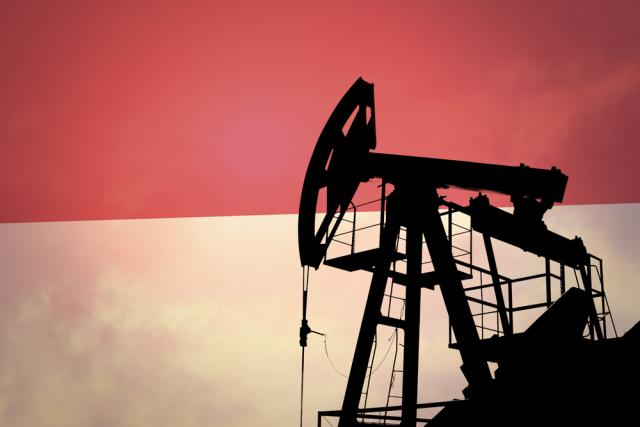
PT Pertamina is looking to apply advanced EOR methods at fields on the Rokan Block. (Source: Shutterstock.com)
Concerned about falling oil production, Indonesia’s state-run PT Pertamina is preparing to launch an EOR project in the aging Rokan Block before taking over the concession from Chevron in 2021.
The national oil company said it would launch the EOR project in the country’s second largest oil-producing concession later this year as the existing operator, Chevron, is said to be reluctant to make fresh investments at the end of the contract.
“Pertamina has conducted preliminary portfolio [screening and prioritization] to the target fields that can be optimized through primary, secondary recovery [water flood] and tertiary recovery [steam flood and chemical EOR) so that oil production can be increased when the transfer in management,” Darmawan H. Samsu, Pertamina’s upstream director, said last week.
Chevron Pacific Indonesia (CPI), a Chevron subsidiary, has been operating the Rokan Block, located in east Sumatra, since 1971. It has more than 90 fields—Duri, Minas and Bekasap—and pumps less than 190,000 barrels of oil per day (bbl/d), down from 209,000 bbl/d in 2018 and more than 1 million bbl/d a few years back.
Most of the fields in the Rokan Block, according to the country’s upstream regulator SKK Migas, have entered a natural decline phase and production could slip further if EOR projects are not implemented.
SKK Migas deputy director Fatar Yani Abdurrahman said it is important to ensure production performance of the block during the transition period. “The operator doesn’t want to invest a lot. This is the task of the new contractor. Therefore, we are pursuing,” he said at an industry meeting recently.
“The [production] ability of Rokan will increase to 400,000 barrels per day if EOR is implemented,” he added.
More than 1.2 billion barrels of oil reserves are believed to remain in the Rokan concession.
The Indonesian government has provided a legal cover for the Pertamina’s entry to Rokan. It enacted a regulation in April allowing the new contractors to invest in oil and gas blocks they won even before the transfer of operations.
Djoko Siswanto, director-general for oil in the energy and mineral resources ministry, said Ministerial Regulation (Permen ESDM) No. 3/2019 ensures the legality of new contractor’s actions in investing in the blocks to prevent any production decline.
“New contractors can invest earlier [in the blocks they have been given] after they have signed the PSC [production-sharing contract],” he said.
Pertamina last month signed a PSC for the Rokan Block for 20 years, starting from Aug. 9, 2021, with a definitive commitment for EOR.
A new subsidiary, PT Pertamina Hulu Rokan, was incorporated to develop and operate oil and gas fields in the block.
The Indonesian national oil company is looking to apply advanced EOR methods, particularly chemicals/gas injection, to increase crude oil production from the aging oil fields, mainly Duri (heavy oil) and Minas (light oil), in addition to the water and steam flood EOR methods adopted by the existing operator Chevron.
EOR strategies, however, will be selected based on crude oil properties and the production stage of reservoirs.
Pertamina believes the existing steam and waterflood EOR methods in the Duri and Minas fields, respectively, have lost their relevance due to changes in reservoir fluid characteristics.
The Duri Field contains medium-heavy crude that is difficult to produce using traditional techniques. A chemical injection EOR is likely to restore formation pressure and enhance oil displacement in the reservoir and optimize production from the mature fields.
Duri, the largest oil-producing field in Rokan, has been under steam flood EOR since 1985. It pumped about 100,000 bbl/d in 2018 with infill drilling, workover and steam flood activities. Chevron claims steam flooding at Duri has more than tripled oil production and enabled the recovery of more than 2 billion barrels of crude oil.
Chevron has adopted water flooding-based EOR for the Minas Field due to its nature of light oil. This field produces Sumatran Light Crude from shallow reservoirs.
Pertamina is open to EOR partnerships with global firms, saying it will seek a technological partner when needed. The company signed separate memorandums of understanding with Japan’s JX Nippon Oil & Gas Exploration Corp. and China’s Sinopec last year for cooperation in the development of EOR technology and associated projects.
The national company has committed to invest US$500 million in the Rokan concession during the first five years as part of the PSC.
But industry analysts have raised doubts about Pertamina’s ability to raise production 400,000 bbl/d due to the company’s limited experience in implementing the EOR projects.
“Considering the maturity of the Rokan fields, even maintaining the production at a flat level would be very challenging without major new development projects,” Johan Utama, a research analyst at Wood Mackenzie, told The Jakarta Post recently.
The Rokan Block spans 6,264 sq km (2,418 sq miles) in central Sumatra, which is estimated to have produced more than 12 billion barrels of oil during the last 48 years under Chevron’s management.
Recommended Reading
BP Starts Oil Production at New Offshore Platform in Azerbaijan
2024-04-16 - Azeri Central East offshore platform is the seventh oil platform installed in the Azeri-Chirag-Gunashli field in the Caspian Sea.
Russia Orders Companies to Cut Oil Output to Meet OPEC+ Target
2024-03-25 - Russia plans to gradually ease the export cuts and focus on only reducing output.
Global Oil Demand to Grow by 1.9 MMbbl/d in 2024, Says Wood Mac
2024-02-29 - Oil prices have found support this year from rising geopolitical tensions including attacks by the Iran-aligned Houthi group on Red Sea shipping.
Oil Rises After OPEC+ Extends Output Cuts
2024-03-04 - Rising geopolitical tensions due to the Israel-Hamas conflict and Houthi attacks on Red Sea shipping have supported oil prices in 2024, although concern about economic growth has weighed.
Oil Market Shifting Back to Supply/Demand
2024-03-08 - Stratas Advisors' John Paisie forecasts the price of Brent crude to increase during the second and third quarters of this year and move toward $90/bbl.

